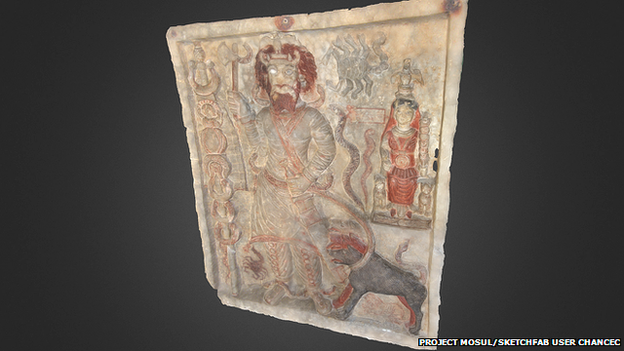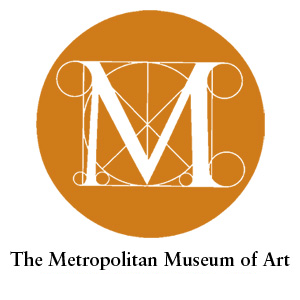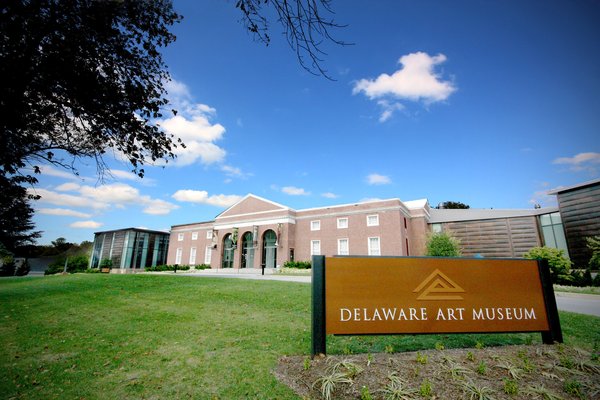Label: museums
Wednesday 11th May 2016The New Gallery Experience

The modern gallery experience began with the advent of the self-guided tour. It eventually progressed to a podcast that you could download to your iPod, and then eventually to the ultra-modern app-based experience that is still the leading choice for the forward-thinking gallery. Now that's all changed.
Perhaps it shouldn't be surprising that the next wave of art appreciation would arrive from California. The San Francisco Museum of Modern Art (SFMOMA to those in the know, whatever that means) has recently unveiled it's newest digital approach to the guided tour.
Naturally, it's based in an app for your smartphone, but instead of simply guiding you through the space, they've taken it one step further. Thanks to the advanced location technology that is standard in almost every smartphone on today's market, the museum can pinpoint your location within the space and provide you with commentary related to the piece that you're looking at.
SFMOMA has partnered with Apple, who created a high-resolution map of the museum space that enables their technology to pinpoint your location precisely, and play you the appropriate element of the tour without having to enter any codes or mess with your phone at all.
The voice of a veteran radio announcer is the first thing you hear upon loading the app, with a hilarious and reassuring message: “The guides will tell you where to go. They’ll wait for you, because they know where you are too. *pause* Oh, that sounds creepy—it’s not.”
They've taken it one step further, though, providing a number of different and sometimes wildly contrasting tour guides, sort of in the same way that you can download the voice of Homer Simpson for your car's GPS navigator. Homer has yet to make an appearance in the SFMoMA guide app, but it may just be a matter of time.
Instead, you can listen to actors from the popular HBO show Silicon Valley discussing your pieces, or perhaps the French tightrope walker Philippe Petit analyzing the balanace of light against brushstrokes.
No matter how you choose to interact with museums, this is surely going to change your perspective. Personally, this writer prefers to be dropped in at the deep-end to experience things without the benefit of a guide, but perhaps the best balance would be to work ones way through the museum as deep as possible and only then to enable the app, so it can act as a guiding light out from the darkness.
Posted on May 11th 2016 on 06:46pm
0 Comments
Friday 09th October 2015Even Venice is Not Immune
One of the more disturbing trends we've been seeing lately in the West is a surprising yet sinister one, a fairly rare type of thing to discover in the art world. As cities grow, develop and change with the changing tides of the global economy, many cities that were built around highly specific industries suddenly find themselves strapped for cash and scrambling to find ways to balance their books.
Most problematically, many of these cities were previously extremely well off due to the boom of their specific industry, no matter whether it was automobile manufacturing or tourism, and when cities are well off they tend to invest in great public cultural works, including their own municipal museums. When the bottom falls out of their industry, many myopic - and arguably spineless - politicians look around desperately for any chance they have to offset even the most temporary of budget deficits, all as a way of propping up their own flagging efforts at financial management and appearing to be strong and decisive.
For some reason, these politicians often look towards the art collections their cities built up during the boom years as a resource to be spent rather than a treasure to be protected. We saw it during the bankruptcy of the city of Detroit, as the American automotive manufacturing sector collapsed, and the emergency relief managers seriously considered selling off some of the works from the Detroit Institute of Art collection to fill up their budget issues. Probably the last place we would ever expect it to happen is in one of those gems of artistic and cultural history - Venice, Italy.
The floating city (or the sinking city, depending on who you ask) has always been a tourist haven, and perhaps overdependence on this primary industry is part of the reason that they are now in such dire financial circumstances. However it came about, the new mayor of Venice, Luigi Brugnaro, seems to feel it is acceptable to auction off the artistic works accumulated by the city's civic museums. The works in question are by Gustav Klimt and Marc Chagall, and could raise up to 400 million euros at auction. The reason he attempts to give to justify the sale of these works? The artists have nothing to do with Venice, and therefore don't need to be house by the city's museums but should belong in private hands.
It may start there, but what happens the year after when there has been no improvement in the city's financial situation? How many more works will be "justified" as saleable?
Posted on October 09th 2015 on 08:15pm
0 Comments
Friday 11th September 2015Curator Salaries and Museum Bankruptcies
Executive salaries have been in the news quite a bit ever since the global financial meltdown in 2008. In case you hadn't been paying attention, or were on another planet during that time, executives at major firms that had experienced some serious financial trouble - and in some cases, were even directly responsible for the global issues - were being given outrageously large bonuses and salary raises despite their damaging actions. This trend has continued in many of the world's largest firms, even as companies are trying to refuse to provide raises for the lower levels of staff - you know, the people who actually do the work.
With all that in mind, it's hard to tell if the current situation at the beleaguered Detroit Institute of Arts should be surprising or not. For those of you who haven't been following the situation, partially as a direct result of the collapse of the US auto industry, which was centred around Detroit, the entire city of Detroit has declared bankruptcy. The bureaucrats charged with turning the city's books around have explored various methods of raising funds, and briefly floated the possibility of selling off some of the highly-valued collection from the Detroit Institute of Arts (as we wrote about previously). Fortunately, this idea was largely quashed, although some factions within the municipal government are still keen on the idea.
The truly baffling element, however, comes in the form of a press release from the DIA. They have decided to grant salary raises to their three top executives: the former CEO Graham Beal, the COO Annmarie Erickson, and the CFO Robert Bowen. These aren't mere pittances, however - each salary has been raised to the tune of $49,000 USD, an increase of more than the average yearly income of the residents of Detroit. The reason for this extremely generous raise? The turmoil caused by trying to fight off the city's emergency manager, who was the main driving force behind the idea of selling off parts of the museum's collection. Yes, you read that correctly: in order to cope with the possibility of selling off the collection due to lack of funding, they have given raises to their chief executives. The mind boggles.
As if that wasn't enough of an insult, the departing CEO Beal, who stepped down in June, was also granted a hefty severance package of $285,000. But wait, there's more! Beal was granted a loan from the museum to develop his house - and the entirety of that loan has also been forgiven, to the tune of over $155,000! It beggars belief, but there you have the solid numbers. It's a disgrace when the corporate financial excesses bleed over into the art world. Here's hoping it doesn't start a trend.
Posted on September 11th 2015 on 06:28pm
0 Comments
Wednesday 24th June 2015Do Auction Prices Really Matter?
One of the staples of art news in the wider media world is record breaking auction prices. It seems nearly impossible to go a week without seeing another news story about a new auction record for a painting, or a work by a living artist, or for a 3 day blockbuster sale where billions of dollars change hands across a few separate auction lots. We've been a bit guilty of this as well, as the numbers truly are staggering, but it has eventually led us to wonder: what does this really have to do with art? It's occasionally interesting, but when new records seem to be cropping up monthly, if not weekly, it's difficult to get as excited about it as before this trend kicked off.
So what does it really have to do with art? In the day-to-day practical life of most artists, it has little to nothing to do with art. The pieces that are being exchanged are often beautiful, and often historic, but to the collectors who pay these incredible sums for the pieces, does the history or beauty really matter? Or is it simply a tax-write off, a way to shelter some income, or an investment that will appreciate in value, no different than buying stock in a new company?
The only possible exceptions might be the works by still-living artists, as those are only recently commanding the staggering prices that classic works by European masters and their lot have always received. They're changing hands less and less frequently nowadays, so perhaps that is a part of what is driving up auction prices around the globe. The artist still doesn't see a single cent of any auction price, regardless of whether they're still living or not, of course, so perhaps that still doesn't matter.
Perhaps the biggest concern is that these truly incredible valuations for pieces are causing cash-strapped museums from around the world to consider breaking up their collections in order to create new endowments to keep their doors open - or in some cases, to expand their collections. All this really does, though, is remove a piece of incredible cultural history from public access, so that a wealthy speculator can preserve it in a warehouse somewhere in the hopes that it will appreciate value. Isn't art supposed to be for the world at large?
Posted on June 24th 2015 on 07:25pm
0 Comments
Friday 19th June 2015Reconstructing Lost Artworks
War is a terrible and seeming inescapable part of the world, and we pay uncountable prices for it, both literally and figuratively - but one of the tragically often-ignored prices is in the cultural treasures that are lost along the way. Most notable recently during the invasion of Iraq in 2003 when numerous museums and galleries were looted, and unfortunately still occurring today thanks to the constant fighting in many areas of Iraq and neighbouring countries due to the rise of the Islamic State, some treasures are being stolen and sold on the black market, while some are simply being destroyed. Fortunately for the cultural history of the world, some of these priceless artifacts are being reconstructed using an advanced technology known as photogrammetry.
Photogrammetry is a process that takes multiple photos of a different angles of an object and recreates them as a digital 3D file, one that could then be either rendered and viewed on the computer screen, or even put through a 3D printer to create a replica of the original piece. Naturally, these can never replace the value of the lost works, but since most will never see the light of day again, it's the best chance we're likely to have.
One of the most interesting projects to come along that uses these techniques is named Project Mosul, after the now-destroyed Mosul Museum. It's based around a crowdsourcing effort, so that anyone who visited the museum and snapped pictures of the pieces on display can submit their photographs to the project to help refine the 3D models of destroyed artworks. The more source photographs there are, the more detailed the reconstruction can be, as each photograph is typically taken from a slightly different angle, which gives a slightly different description of the 3D surfaces of the object in question.
The founders of Project Mosul, who are entirely volunteer staff, hope to expand the project to cover other destroyed sites around the world, and open up new possibilities for experiencing cultural treasures that have been destroyed. Would that it weren't necessary, but war sadly seems to be one of the most constant phenomenons throughout history - perhaps one day, we'll be able to overcome even that legacy.
Speaking to the BBC, Project Mosul co-founder Matthew Vincent said, "3D printing is really proving to be one of the most valuable assets for heritage that we have today. It's a way to bring them back to life and have a tactile experience with them, even if we can't guarantee that they're exactly as the original would have been.
"Whether it is because of conflict or natural disaster, our heritage is such a delicate and valuable resource, the only way that we can really preserve it is to take the steps to make those digital surrogates, so that we can protect the physical reality of that heritage as well."
Posted on June 19th 2015 on 09:15pm
0 Comments
Friday 27th March 2015Free Art Books from the Met

One of the most enjoyable things about the internet is the way that it has completely changed our access to information. Almost any question can be answered relatively easily, and even the more complex questions can likely be answered with a little bit of digging around online (and, of course, the application of some critical thinking skills to ensure you don't wind up in the web of misinformation that also exists parallel to fact). But there's still something nice about having books, for the simple fact that it's more of a curated experience, almost akin to walking through a museum. Instead of self-direction, an expert guides you through a topic, showing examples they've chosen instead of ones you might happen upon yourself. This becomes a bit of a problem in the world of art books, however, since so many of them are large-format hardcover books that can easily let you rack up a huge bill at your local bookstore (or, more likely at Amazon, but regardless - they're expensive).
Enter the Metropolitan Museum of Art, which has decided to release a huge number of its published works online completely free - and that's free as in beer, no hidden fees or anything like that. Under the umbrella of their MetPublications brand, there are now over 400 free ebooks available for download from their website, which you can
browse through here. They politely ask for a donation, but it's completely optional. When you stack that up against paying well over $100 for a single one of their admittedly gorgeous volumes, it's easy to see the appeal.
If that doesn't pique your interest, however, the Met has also decided to digitize and make public over 400,000 high resolution images from their collection - and best of all, they're free to access and free to use, providing you don't try to take credit for them, of course. Give it a look over and see if you find your next inspiration!
Posted on March 27th 2015 on 04:57pm
0 Comments
Saturday 28th February 2015Selfie Stick Bans

Back in January, there was an article here on Gallereo about a new phenomenon that's changing that most post-modern of new media art forms, the selfie. Snicker all you like, but it's hard to deny how the term has captured the popular imagination, and by extension, no surprise that someone cashed in by developing what is essentially a hand-held tripod, used to extend the compositional range of your selfportrait. It grips your phone, and the camera's shutter is triggered remotely by a button in the handle.
It's that last part that got them into trouble originally in South Korea, where the devices were first banned, but that trend is spreading almost as fast as the selfies they enable. Major museums and galleries in cities around the world have begun to prohibit their use, and for a wide variety of reasons. The primary issue seems to be that they're concerned the devices will completely disrupt the atmosphere, and in some cases, actually damage the works of art themselves. Oddly enough, many stress that they haven't actually had any issues with the devices as of yet, but hardly a week goes by when another blurb is splashed across the internet that yet another museum or gallery has announced a prohibition against their use.
One would think that this is simply a logical extension of the standard museum and gallery line, which variously prohibits flash photography and the usage of tripods, but perhaps a bit of free publicity is just too tempting to turn down. In the more general public sector, those who criticize the devices seem to find them obnoxious, which is probably simply an extension of their hatred of the entire selfie concept. In the art museum sphere, it seems that the main fear is vandalism - and on the surface, that seems plausible, except that it ignores a simple fact of human nature. If someone is going to be so insensitive and boorish as to damage priceless works of art, they're going to do it anyways, whether they have a selfie stick or not, and banning the sticks isn't going to remove the keys and coins in their pockets which could do exactly the same job. We should simply be doing our best to create a respectful atmosphere where our own enjoyment doesn't need to compromise the enjoyment of others.
Posted on February 28th 2015 on 03:38am
0 Comments
Friday 08th August 2014When Museums Sell Their Artworks Unless you've been living under a rock for the last 6 years (and nobody foreclosed on your rock), you're probably aware that the world has been going through a serious period of economic turmoil that has rocked industries from one side of the globe to the other. Despite what we hear about art auction prices and record sales numbers, the art world isn't immune from this economic instability, and some of the most venerable museums in the world have had to variously tighten their belts, whether it comes in the form of reduced hours, smaller collections or, in the case of one recent museum, actually beginning to sell off parts of their collection.
Unless you've been living under a rock for the last 6 years (and nobody foreclosed on your rock), you're probably aware that the world has been going through a serious period of economic turmoil that has rocked industries from one side of the globe to the other. Despite what we hear about art auction prices and record sales numbers, the art world isn't immune from this economic instability, and some of the most venerable museums in the world have had to variously tighten their belts, whether it comes in the form of reduced hours, smaller collections or, in the case of one recent museum, actually beginning to sell off parts of their collection.
Needless to say, it must be a fairly difficult decision for a museum to decide to sell off some of its collection - even a single piece, hard-won, can be difficult to let go of. The cautionary tale of the troubled and essentially bankrupt city of Detroit and its museums should have given some idea of what the backlash would be like when selling assets, but as it turns out, the directors of the Delaware Art Museum weren't paying such close attention.
In fact, they recently sold what is arguably one of the most famous pieces in their collection at auction in order to help their financial situation. William Holman Hunt's 'Isabella and the Pot of Basil' was sold at auction by Christie's. The museum claims that the it was all to settle a debt that was incurred by expansion that had no other solution, as well as adding the museums endowment coffers. The Association of Art Museum Directors was so enraged at this flagrant sale they formally sanctioned the Delaware Art Museum in June, preventing any other member museums from loaning works to the Delaware and preventing them from helping with any exhibitions.
Amusingly - or irritatingly, depending on where you stand - Christie's had valued the painting between 8.4 and 13.4 million dollars US - which would be quite a substantial part of the $19 million debt they wanted to settle. However, Christie's only managed a $4.25 million sale, just barely over half of their lowest valuation. Embarrassing for all concerned.
However, the Delaware hasn't learned its lesson, as it has announced plans to sell an additional two works from the collection, Winslow Homer's 'Milking Time', and Alexander Calder's 'The Black Crescent'. Admittedly, their membership is down nearly 50% compared to 2001 levels, but still, it's hard to see how reducing the collection is a sustainable strategy for building membership numbers for the future.
Posted on August 08th 2014 on 05:30pm
0 Comments
 The modern gallery experience began with the advent of the self-guided tour. It eventually progressed to a podcast that you could download to your iPod, and then eventually to the ultra-modern app-based experience that is still the leading choice for the forward-thinking gallery. Now that's all changed.
The modern gallery experience began with the advent of the self-guided tour. It eventually progressed to a podcast that you could download to your iPod, and then eventually to the ultra-modern app-based experience that is still the leading choice for the forward-thinking gallery. Now that's all changed. One of the more disturbing trends we've been seeing lately in the West is a surprising yet sinister one, a fairly rare type of thing to discover in the art world. As cities grow, develop and change with the changing tides of the global economy, many cities that were built around highly specific industries suddenly find themselves strapped for cash and scrambling to find ways to balance their books.
One of the more disturbing trends we've been seeing lately in the West is a surprising yet sinister one, a fairly rare type of thing to discover in the art world. As cities grow, develop and change with the changing tides of the global economy, many cities that were built around highly specific industries suddenly find themselves strapped for cash and scrambling to find ways to balance their books. Executive salaries have been in the news quite a bit ever since the global financial meltdown in 2008. In case you hadn't been paying attention, or were on another planet during that time, executives at major firms that had experienced some serious financial trouble - and in some cases, were even directly responsible for the global issues - were being given outrageously large bonuses and salary raises despite their damaging actions. This trend has continued in many of the world's largest firms, even as companies are trying to refuse to provide raises for the lower levels of staff - you know, the people who actually do the work.
Executive salaries have been in the news quite a bit ever since the global financial meltdown in 2008. In case you hadn't been paying attention, or were on another planet during that time, executives at major firms that had experienced some serious financial trouble - and in some cases, were even directly responsible for the global issues - were being given outrageously large bonuses and salary raises despite their damaging actions. This trend has continued in many of the world's largest firms, even as companies are trying to refuse to provide raises for the lower levels of staff - you know, the people who actually do the work. One of the staples of art news in the wider media world is record breaking auction prices. It seems nearly impossible to go a week without seeing another news story about a new auction record for a painting, or a work by a living artist, or for a 3 day blockbuster sale where billions of dollars change hands across a few separate auction lots. We've been a bit guilty of this as well, as the numbers truly are staggering, but it has eventually led us to wonder: what does this really have to do with art? It's occasionally interesting, but when new records seem to be cropping up monthly, if not weekly, it's difficult to get as excited about it as before this trend kicked off.
One of the staples of art news in the wider media world is record breaking auction prices. It seems nearly impossible to go a week without seeing another news story about a new auction record for a painting, or a work by a living artist, or for a 3 day blockbuster sale where billions of dollars change hands across a few separate auction lots. We've been a bit guilty of this as well, as the numbers truly are staggering, but it has eventually led us to wonder: what does this really have to do with art? It's occasionally interesting, but when new records seem to be cropping up monthly, if not weekly, it's difficult to get as excited about it as before this trend kicked off. War is a terrible and seeming inescapable part of the world, and we pay uncountable prices for it, both literally and figuratively - but one of the tragically often-ignored prices is in the cultural treasures that are lost along the way. Most notable recently during the invasion of Iraq in 2003 when numerous museums and galleries were looted, and unfortunately still occurring today thanks to the constant fighting in many areas of Iraq and neighbouring countries due to the rise of the Islamic State, some treasures are being stolen and sold on the black market, while some are simply being destroyed. Fortunately for the cultural history of the world, some of these priceless artifacts are being reconstructed using an advanced technology known as photogrammetry.
War is a terrible and seeming inescapable part of the world, and we pay uncountable prices for it, both literally and figuratively - but one of the tragically often-ignored prices is in the cultural treasures that are lost along the way. Most notable recently during the invasion of Iraq in 2003 when numerous museums and galleries were looted, and unfortunately still occurring today thanks to the constant fighting in many areas of Iraq and neighbouring countries due to the rise of the Islamic State, some treasures are being stolen and sold on the black market, while some are simply being destroyed. Fortunately for the cultural history of the world, some of these priceless artifacts are being reconstructed using an advanced technology known as photogrammetry. One of the most enjoyable things about the internet is the way that it has completely changed our access to information. Almost any question can be answered relatively easily, and even the more complex questions can likely be answered with a little bit of digging around online (and, of course, the application of some critical thinking skills to ensure you don't wind up in the web of misinformation that also exists parallel to fact). But there's still something nice about having books, for the simple fact that it's more of a curated experience, almost akin to walking through a museum. Instead of self-direction, an expert guides you through a topic, showing examples they've chosen instead of ones you might happen upon yourself. This becomes a bit of a problem in the world of art books, however, since so many of them are large-format hardcover books that can easily let you rack up a huge bill at your local bookstore (or, more likely at Amazon, but regardless - they're expensive).
One of the most enjoyable things about the internet is the way that it has completely changed our access to information. Almost any question can be answered relatively easily, and even the more complex questions can likely be answered with a little bit of digging around online (and, of course, the application of some critical thinking skills to ensure you don't wind up in the web of misinformation that also exists parallel to fact). But there's still something nice about having books, for the simple fact that it's more of a curated experience, almost akin to walking through a museum. Instead of self-direction, an expert guides you through a topic, showing examples they've chosen instead of ones you might happen upon yourself. This becomes a bit of a problem in the world of art books, however, since so many of them are large-format hardcover books that can easily let you rack up a huge bill at your local bookstore (or, more likely at Amazon, but regardless - they're expensive). Back in January, there was an article here on Gallereo about a new phenomenon that's changing that most post-modern of new media art forms, the selfie. Snicker all you like, but it's hard to deny how the term has captured the popular imagination, and by extension, no surprise that someone cashed in by developing what is essentially a hand-held tripod, used to extend the compositional range of your selfportrait. It grips your phone, and the camera's shutter is triggered remotely by a button in the handle.
Back in January, there was an article here on Gallereo about a new phenomenon that's changing that most post-modern of new media art forms, the selfie. Snicker all you like, but it's hard to deny how the term has captured the popular imagination, and by extension, no surprise that someone cashed in by developing what is essentially a hand-held tripod, used to extend the compositional range of your selfportrait. It grips your phone, and the camera's shutter is triggered remotely by a button in the handle. Unless you've been living under a rock for the last 6 years (and nobody foreclosed on your rock), you're probably aware that the world has been going through a serious period of economic turmoil that has rocked industries from one side of the globe to the other. Despite what we hear about art auction prices and record sales numbers, the art world isn't immune from this economic instability, and some of the most venerable museums in the world have had to variously tighten their belts, whether it comes in the form of reduced hours, smaller collections or, in the case of one recent museum, actually beginning to sell off parts of their collection.
Unless you've been living under a rock for the last 6 years (and nobody foreclosed on your rock), you're probably aware that the world has been going through a serious period of economic turmoil that has rocked industries from one side of the globe to the other. Despite what we hear about art auction prices and record sales numbers, the art world isn't immune from this economic instability, and some of the most venerable museums in the world have had to variously tighten their belts, whether it comes in the form of reduced hours, smaller collections or, in the case of one recent museum, actually beginning to sell off parts of their collection. 



